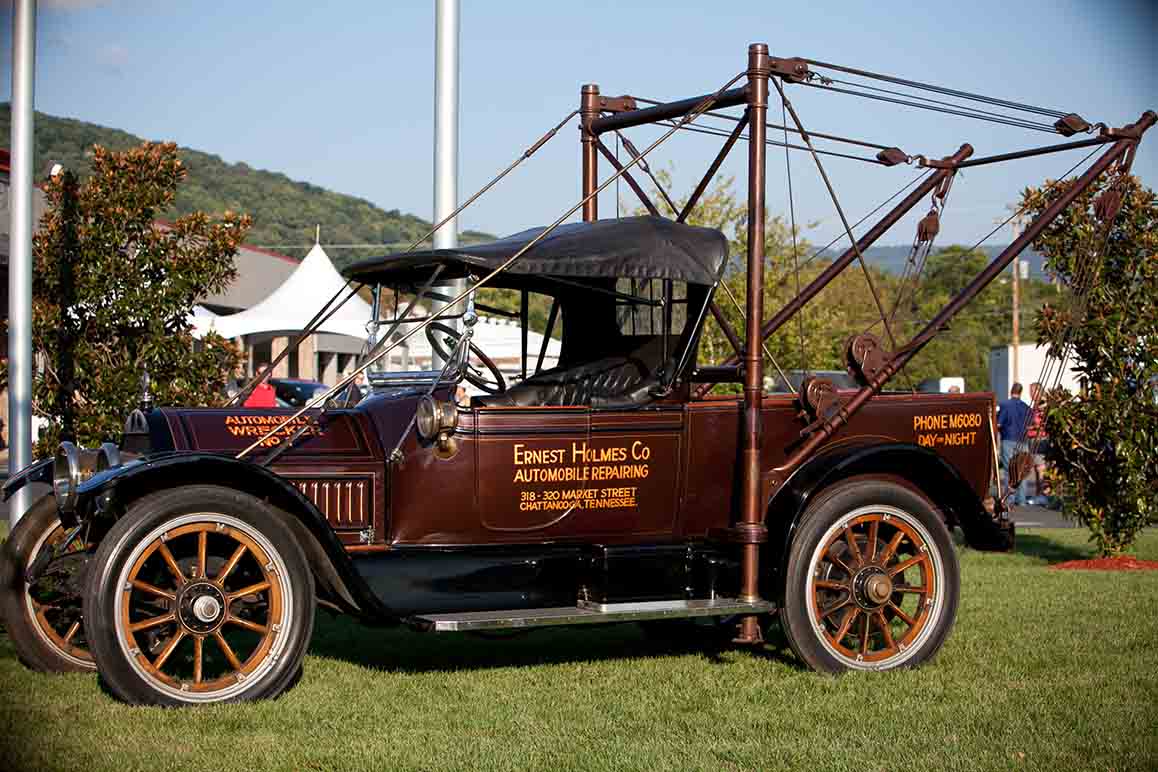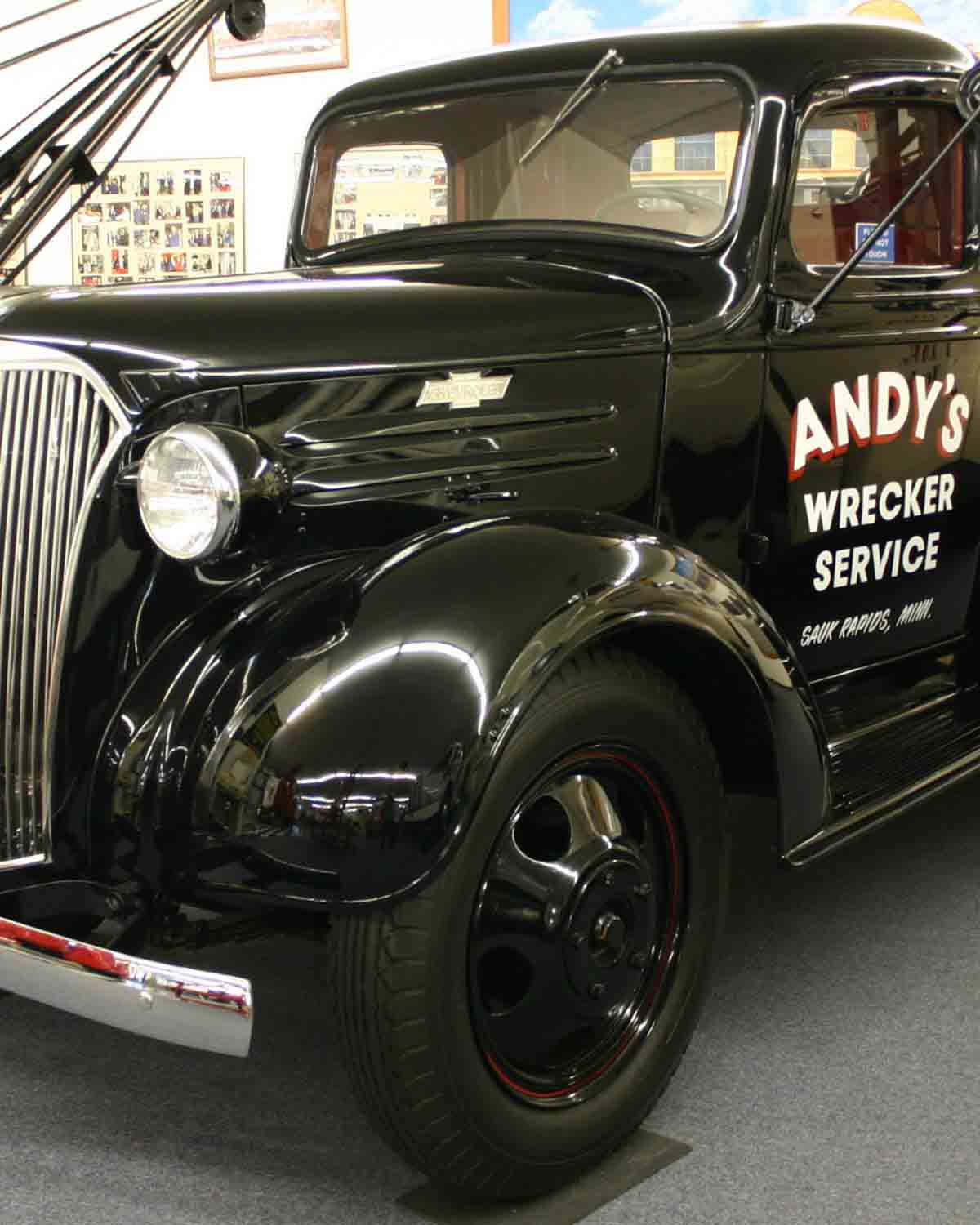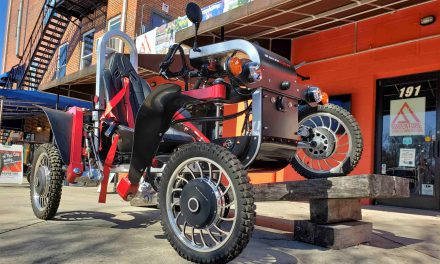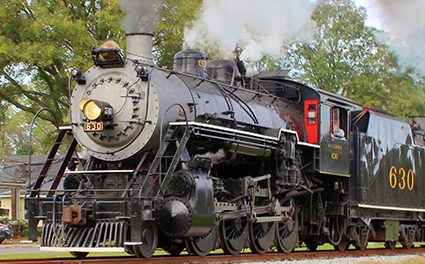
5 Can’t Miss Moments at the International Towing & Recovery Museum
Originally housed in a tractor trailer that traveled the country, the International Towing & Recovery Museum celebrates an industry often overlooked. Founded by Friends of Towing, the museum found its permanent home in Chattanooga in the early 1990s. The Scenic City is, in fact, the birthplace of the tow truck. It was a perfect fit.
Today the museum offers a unique look at relics from the history of the towing industry. Home to 24 trucks, plus historic golf carts and pedal cars, the collection ranges from models made in the early 1900s to a 2001 pink freightliner. Here’s what not to miss.
- The History of Ernest Holmes. A Chattanooga native, Holmes invented the tow truck in 1916 after a frustrating attempt to help get a friend’s flipped truck out of a ditch. He outfitted a Cadillac with a pulley system in his garage, which was just a few blocks from where the museum is located today.
- The 1940s Diamond-T 969 WWII Wrecker. Manufactured locally, this vehicle became a part of the Red Ball Express, a convoy that moved supplies for Allied Forces. “This was on the beaches of Normandy and traveled through World War II as the allies pushed the Nazis back,” says the Towing Museum’s Nyle Vincent.
- The World’s Fastest Wrecker. This orange and white Chevrolet Silverado registered 130 miles on the straightaway at Talladega Superspeedway in August 1979. Its average speed around the track, a world record, was 109.33 mph. The feat literally melted the tires, which prevented any attempts at a second run.
- The Indian Tow Motorcycle. This three-wheeled bike made by Indian Motorcycle Manufacturing Company, now owned by Harley-Davidson, was popular in the 1940s. Found in pieces, the bike was put back together based on blueprints.
- The 1947 GMC Bubble Nose. A guest-favorite, this vehicle has worked to haul beer for Pabst Brewing and to tow school buses. Abandoned in a field in Wisconsin, it was found and restored by George Lanser, then put in parades and truck shows.
River Gallery Sculpture Garden: Recognized Excellence
Recognized Excellence High atop a bluff overlooking the Tennessee River you will find River Gallery Sculpture Garden located in the beautiful Bluff View Art District and situated along the coveted Chattanooga Riverwalk. River Gallery Sculpture Garden first opened in...
Blue Whales: Return of the Giants 3D
Return of the Giants 3D Blue Whales 3D narrated by Award-Winning actor Andy Serkis, takes viewers on a journey of a lifetime to explore the world of the magnificent blue whale, a species rebounding from the brink of extinction. Blue whales are the largest animals ever...
Bessie Smith Cultural Center
Celebrating African American History & Culture in Chattanooga A native of Chattanooga, Bessie Smith was a 1920s Blues icon. Mentored by Ma Rainey, she wrote and performed blues classics such as “Nobody Knows You When You’re Down and Out” and “Gulf Coast Blues.”...





